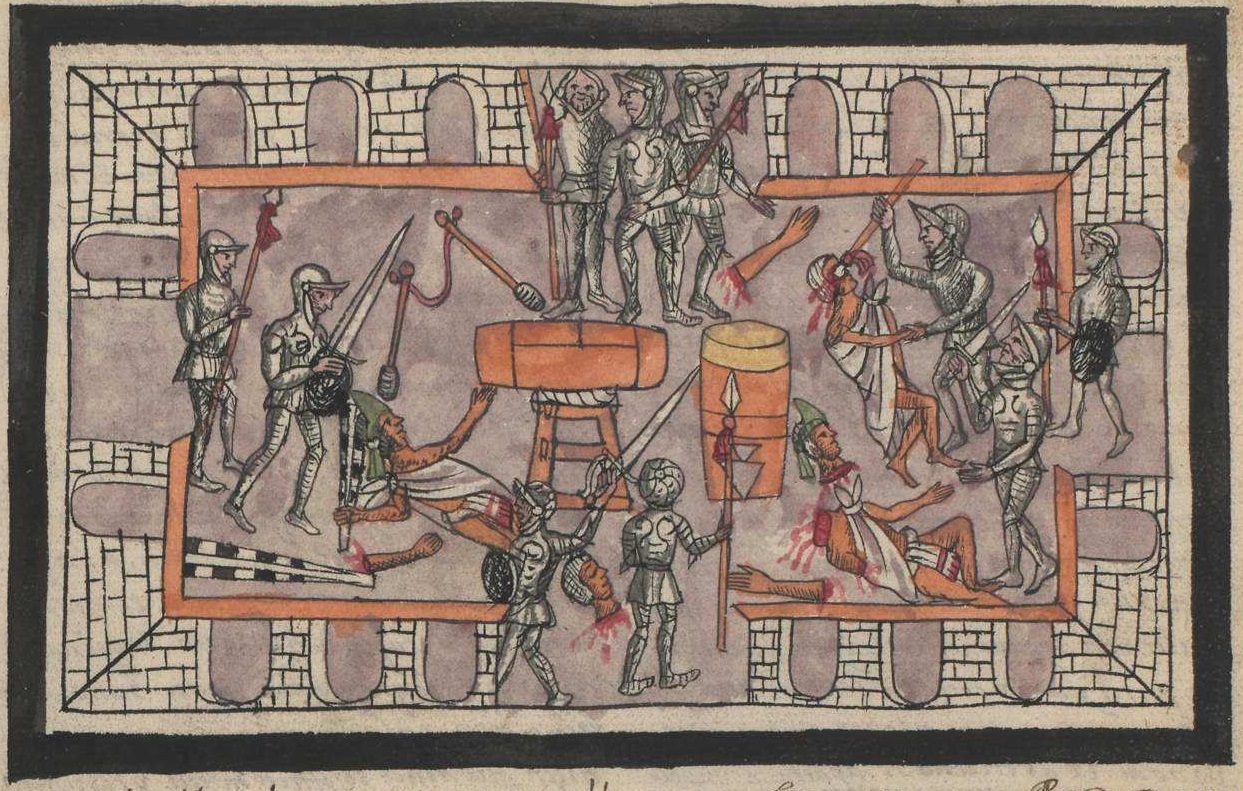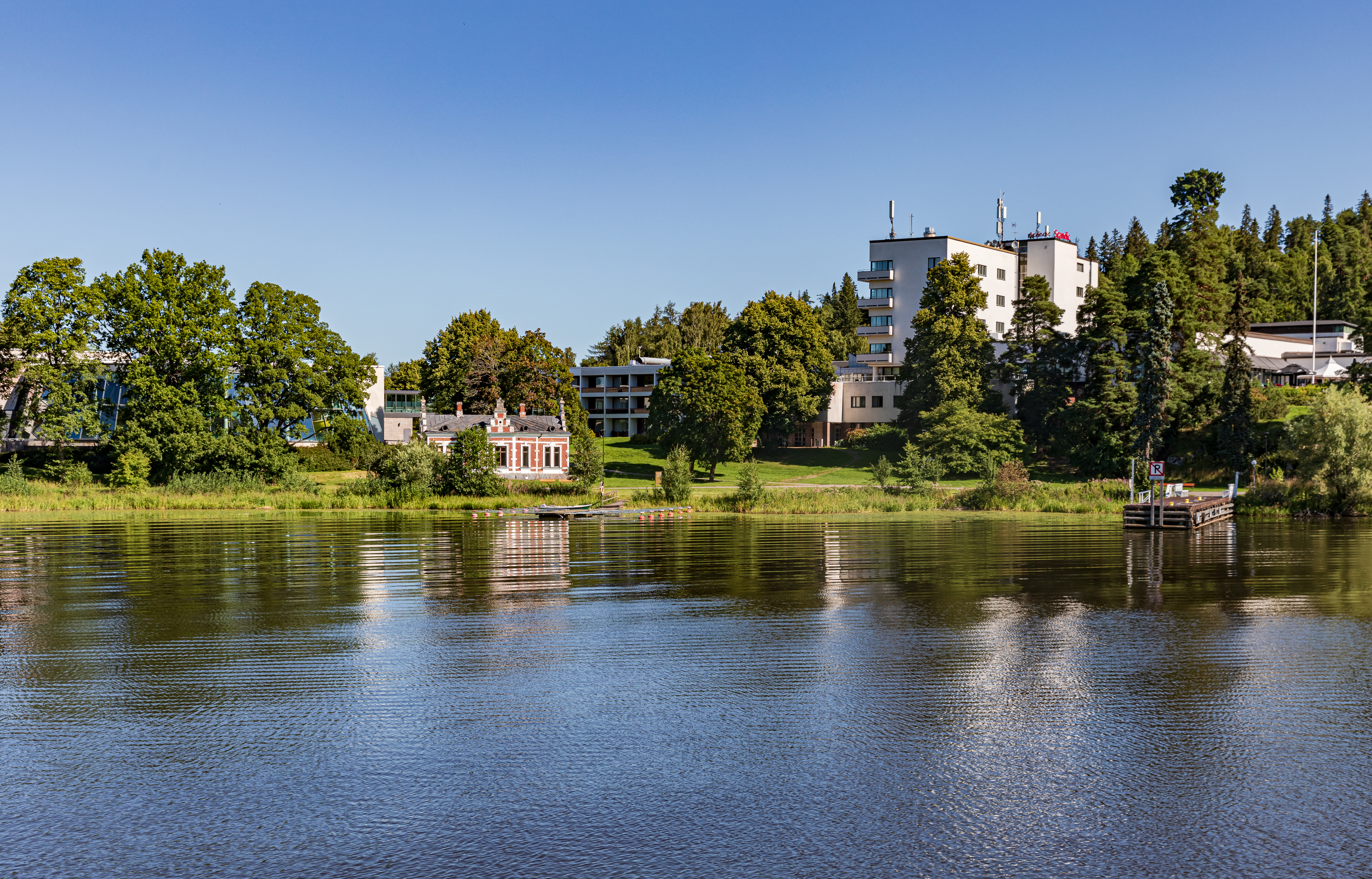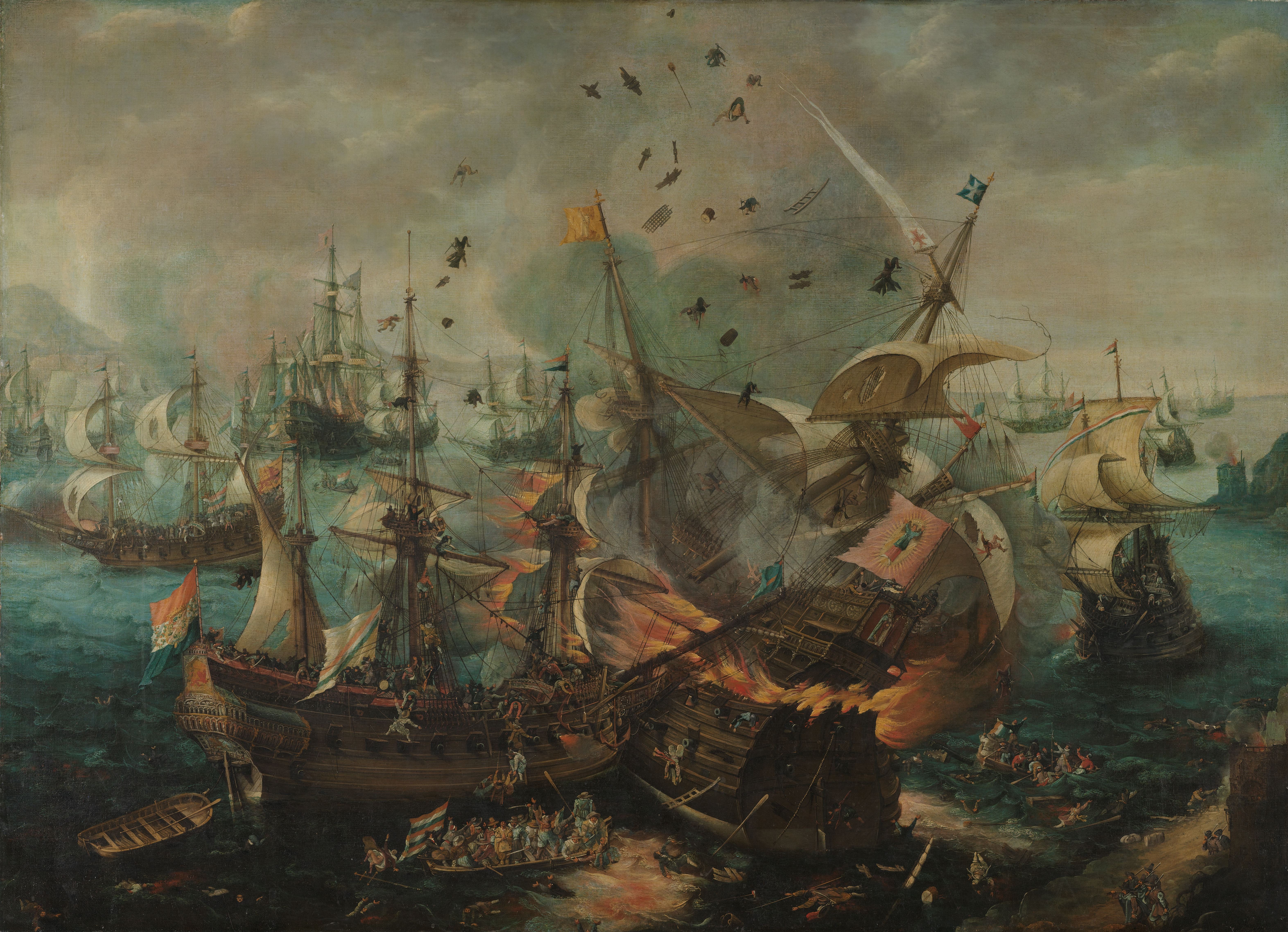|
January 19
Events Pre-1600 * 379 – Emperor Gratian elevates Flavius Theodosius at Sirmium to '' Augustus'', and gives him authority over all the eastern provinces of the Roman Empire. * 649 – Conquest of Kucha: The forces of Kucha surrender after a forty-day siege led by Tang dynasty general Ashina She'er, establishing Tang control over the northern Tarim Basin in Xinjiang. * 1419 – Hundred Years' War: Rouen surrenders to Henry V of England, completing his reconquest of Normandy. * 1511 – The Italian Duchy of Mirandola surrenders to the Pope. * 1520 – Sten Sture the Younger, the Regent of Sweden, is mortally wounded at the Battle of Bogesund and dies on February 3. 1601–1900 * 1607 – San Agustin Church in Manila is officially completed; it is the oldest church still standing in the Philippines. * 1639 – Hämeenlinna () is granted privileges after it separated from the Vanaja parish as its own city in Tavastia. * 1764 – ... [...More Info...] [...Related Items...] OR: [Wikipedia] [Google] [Baidu] |
Gratian
Gratian (; ; 18 April 359 – 25 August 383) was emperor of the Western Roman Empire from 367 to 383. The eldest son of Valentinian I, Gratian was raised to the rank of ''Augustus'' as a child and inherited the West after his father's death in 375. He nominally shared the government with his infant half-brother Valentinian II, who was also acclaimed emperor in Pannonia on Valentinian's death. The East was ruled by his uncle Valens, who was later succeeded by Theodosius I. Gratian subsequently led a campaign across the Rhine, attacked the Lentienses, and forced the tribe to surrender. That same year, the eastern emperor Valens was killed fighting the Goths at the Battle of Adrianople, which led to Gratian elevating Theodosius to replace him in 379. Gratian favoured Nicene Christianity over traditional Roman religion, issuing the Edict of Thessalonica, refusing the office of '' pontifex maximus'', and removing the Altar of Victory from the Roman Senate's Curia Julia. The city ... [...More Info...] [...Related Items...] OR: [Wikipedia] [Google] [Baidu] |
1520
Year 1520 ( MDXX) was a leap year starting on Sunday of the Julian calendar. Events January–March *January 19 – King Christian II of Denmark and Norway defeats the Swedes, at Lake Åsunden in Sweden. The Swedish regent Sten Sture the Younger is mortally wounded in the Battle of Bogesund. He is rushed towards Stockholm, in order to lead the fight against the Danes from there. *February 3 – Swedish regent Sten Sture dies from his wounds leaving a vacancy on the throne that allows King Christian II of Denmark to conquer Sweden within eight months. *February 6 – The Swabian League sells the Duchy of Württemberg to the Holy Roman Emperor, Charles V, for 220,000 florins and payment of the Duchy's debt of 1,100,000 Goldgulden *March 10 – Thomas Howard, 3rd Duke of Norfolk becomes England's new Lord Deputy of Ireland *March 31 – The Magellan expedition, led by Portuguese explorer Ferdinand Magellan (Fernão de Magalhães), pauses in its a ... [...More Info...] [...Related Items...] OR: [Wikipedia] [Google] [Baidu] |
John Wilkes
John Wilkes (17 October 1725 – 26 December 1797) was an English Radicalism (historical), radical journalist and politician, as well as a magistrate, essayist and soldier. He was first elected a Member of Parliament in 1757. In the Middlesex election affair, Middlesex election dispute, he fought for the right of his votersrather than the British House of Commons, House of Commonsto determine their representatives. In 1768, angry protests of his supporters were suppressed in the Massacre of St George's Fields. In 1771, he was instrumental in obliging the government to concede the right of printers to publish wikt:verbatim, verbatim accounts of parliamentary debates. In 1776, he introduced the first Bill (law), bill for parliamentary reform in the Parliament of Great Britain, British Parliament. During the American Revolutionary War, American War of Independence, he was a supporter of the rebels, adding further to his popularity with Patriot (American Revolution), American Whi ... [...More Info...] [...Related Items...] OR: [Wikipedia] [Google] [Baidu] |
1764
Events January–June * January 7 – The Siculicidium is carried out as hundreds of the Székely minority in Transylvania are massacred by the Austrian Army at Madéfalva. * January 19 – John Wilkes is expelled from the House of Commons of Great Britain, for seditious libel. * February 15 – The settlement of St. Louis is established. * March 15 – The day after his return to Paris from a nine-year mission, French explorer and scholar Anquetil Du Perron presents a complete copy of the Zoroastrian sacred text, the '' Zend Avesta'', to the ''Bibliothèque Royale'' in Paris, along with several other traditional texts. In 1771, he publishes the first European translation of the ''Zend Avesta''. * March 17 – Francisco Javier de la Torre arrives in Manila to become the new Spanish Governor-General of the Philippines. * March 20 – After the British victory in the French and Indian War, the first post-war British expedition to explore ... [...More Info...] [...Related Items...] OR: [Wikipedia] [Google] [Baidu] |
Tavastia (historical Province)
Tavastia (; ; ; also called ''Yam'' (Ямь) or ''Yem'' (Емь) in Russian sources) is a historical province in the south of Finland. It borders Finland Proper, Satakunta, Ostrobothnia, Savonia and Uusimaa. History The province has been inhabited since the Stone Age. Northern Tavastia was for a long time a wilderness inhabited by Sami hunter-gatherers and frequented also by Finnish hunters. Only during the late Middle Ages was agriculture slowly introduced to the northern parts of the province. Tavastia is first mentioned in an 11th-century Viking Age runestone ( Gs 13) located in present-day Gävle, Sweden, where it is referred to as '. At that time, Tavastia was said to stretch "from salt sea to salt sea," encompassing what would later become the provinces of Uusimaa and Satakunta, and including the inhabited regions of Southwest Finland within its arc. Numerous prehistoric weapons, like Ulfberht swords, and hillforts have been unearthed in the Tavastia region, in ... [...More Info...] [...Related Items...] OR: [Wikipedia] [Google] [Baidu] |
Vanaja (Finland)
Vanaja is a former municipality of Finland. It was located in Häme Province about north of Helsinki. It is also speculated that it might have been the name for an Iron Age and early Middle Ages settlement found opposite to the Häme Castle. The municipality bordered Hämeenlinna, Hattula, Hauho, Tuulos, Lammi, Janakkala and Renko. Before 1948, it bordered Hämeenlinnan maalaiskunta instead of Hattula. History Iron Age Finnish settlement Vanaja is a name commonly used about the excavation site of an Iron Age settlement in central Tavastia, Finland, opposite to the later Häme Castle in Varikonniemi. According to some interpretations it was a proto-urban settlement, but this is contested. The settlement existed roughly during the 6th to 13th centuries. It is possibly the "town of Vanai" mentioned once in a Novgorod chronicle that describes how it was destroyed by Novgorodian forces in 1311 CE. It has been suggested that the site was abandoned after the attack. As ... [...More Info...] [...Related Items...] OR: [Wikipedia] [Google] [Baidu] |
Privilege (law)
A privilege is a certain entitlement to immunity from prosecution, immunity granted by the state or another authority to a restricted group, either by birth or on a conditional basis. Land-titles and taxi medallions are examples of transferable privilege – they can be revoked in certain circumstances. In modern democratic states, a ''privilege'' is conditional and granted only after birth. By contrast, a ''right'' is an inherent, irrevocable entitlement held by all citizens or all human beings from the moment of birth. Various examples of old common law privilege still exist – to title deeds, for example. Etymologically, a privilege (''privilegium'') means a "private law", or rule relating to a specific individual or institution. The principles of conduct that members of the legal profession observe in their practice are called legal ethics. Boniface's Fulda monastery, abbey of Fulda, to cite an early and prominent example, was granted ''privilege (canon law), privilegium' ... [...More Info...] [...Related Items...] OR: [Wikipedia] [Google] [Baidu] |
Hämeenlinna
Hämeenlinna (; ; ; or ''Croneburgum'') is a city in Finland and the regional capital of Kanta-Häme. It is located in the southern interior of the country and on the shores of Vanajavesi, Lake Vanajavesi. The population of Hämeenlinna is approximately , while the Hämeenlinna sub-region, sub-region has a population of approximately . It is the most populous Municipalities of Finland, municipality in Finland, and the 14th most populous List of urban areas in Finland by population, urban area in the country. Hämeenlinna is the oldest inland city in Finland and was one of the most important Finnish cities until the 19th century. Hämeenlinna was located in the heart of the historic province of Tavastia (historical province), Tavastia. Since then, Hämeenlinna has remained an important regional centre. The medieval Häme Castle (also known as ''Tavastia Castle'') is located in the town. Hämeenlinna is known as the birthplace of the Finnish national composer Jean Sibelius. It i ... [...More Info...] [...Related Items...] OR: [Wikipedia] [Google] [Baidu] |
1639
Events January–March * January 19 – Hämeenlinna () is granted privileges, after it separates from the Vanaja parish, as its own city in Tavastia. *c. January – The first printing press in British North America is started in Cambridge, Massachusetts, by Stephen Daye. * February 18 – In the course of the Eighty Years' War, a sea battle is fought in the English Channel off of the coast of Dunkirk between the navies of the United Provinces of the Netherlands, with 12 warships, and Spain, with 12 galleons and eight other ships. The Spanish are forced to flee after three of their ships are lost and 1,600 Spaniards killed or injured, while the Dutch sustain 1,700 casualties without the loss of a ship. * March 3 – The early settlement of Taunton, Massachusetts, is incorporated as a town. * March 13 – Harvard University is named for clergyman John Harvard. April–June * April 14 – In the Battle of Chemnitz, Swedish fo ... [...More Info...] [...Related Items...] OR: [Wikipedia] [Google] [Baidu] |
Philippines
The Philippines, officially the Republic of the Philippines, is an Archipelagic state, archipelagic country in Southeast Asia. Located in the western Pacific Ocean, it consists of List of islands of the Philippines, 7,641 islands, with a total area of roughly 300,000 square kilometers, which are broadly categorized in Island groups of the Philippines, three main geographical divisions from north to south: Luzon, Visayas, and Mindanao. With a population of over 110 million, it is the world's List of countries and dependencies by population, twelfth-most-populous country. The Philippines is bounded by the South China Sea to the west, the Philippine Sea to the east, and the Celebes Sea to the south. It shares maritime borders with Taiwan to the north, Japan to the northeast, Palau to the east and southeast, Indonesia to the south, Malaysia to the southwest, Vietnam to the west, and China to the northwest. It has Ethnic groups in the Philippines, diverse ethnicities and Culture o ... [...More Info...] [...Related Items...] OR: [Wikipedia] [Google] [Baidu] |
San Agustin Church (Manila)
The Archdiocesan Shrine of Our Lady of Consolation and Cincture, also known as the Church of Saint Augustine and Immaculate Conception Parish, is a Catholic Church, Roman Catholic church under the auspices of the Augustinians, Order of Saint Augustine located inside the historic walled city of Intramuros, Manila, Intramuros in Manila, Philippines. Completed in 1607, it is the oldest stone church in the country. In 1993, San Agustin Church was one of four Philippine churches constructed during the History of the Philippines (1521–1898), Spanish colonial period to be designated as a World Heritage Site by UNESCO, under the collective title ''Baroque Churches of the Philippines''. It was named a National Historical Landmark by the Philippine government in 1976. History San Agustin Church is located in General Luna St., Manila. The present structure is actually the third Augustinian church erected on the site.Layug, p. 83 The first San Agustin Church was the first religious str ... [...More Info...] [...Related Items...] OR: [Wikipedia] [Google] [Baidu] |
1607
Events January–March * January 13 – The Bank of Genoa fails. * January 19 – San Agustin Church, Manila, is officially completed; by the 21st century it will be the oldest church in the Philippines. * January 30 – Coastal flooding around Britain, probably a storm surge, including Bristol Channel floods, 1607, Bristol Channel floods in which a massive wave sweeps along the Bristol Channel, killing an estimated 2,000 people. * February 24 – Claudio Monteverdi's ''L'Orfeo'', the earliest fully developed opera in the modern-day repertoire, premieres at the Ducal Palace of Mantua. * March 10 – Battle of Gol in Gojjam: Susenyos I, Susenyos defeats the combined armies of Yaqob and Abuna Petros II, which makes him Emperor of Ethiopia. April–June * April 25 – Battle of Gibraltar (1607), Battle of Gibraltar: A Dutch Republic, Dutch fleet of 26 warships, led by Admiral Jacob van Heemskerck, stages a surprise attack on a Spanish Empire ... [...More Info...] [...Related Items...] OR: [Wikipedia] [Google] [Baidu] |








